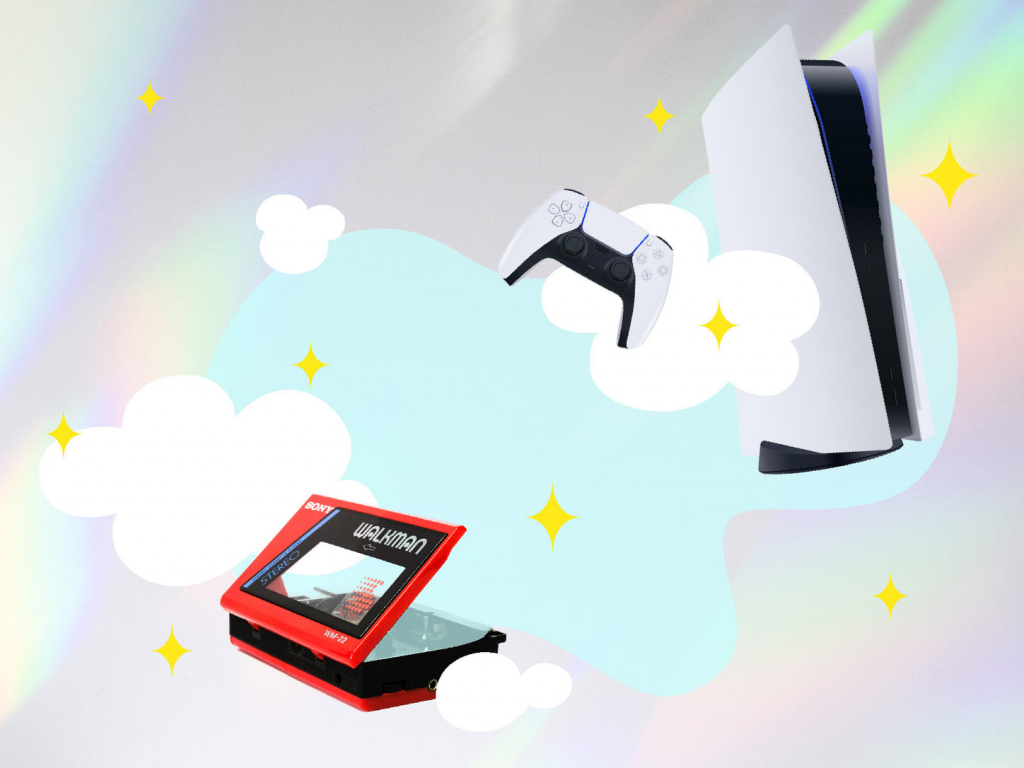On this day 75 years ago Masaru Ibuka and Akio Morita founded Tokyo Tsushin Kogyo (also known as Totsuko), an electronics company that would later change its name to Sony and go on to become one of the world’s most iconic brands.
The pair first met at a Wartime Research Committee in Yokosuka towards the end of World War II, working together to develop thermal guidance systems and night-vision devices for the navy. Despite a 13-year age gap, the two men formed a close bond and were reunited a few months after the Potsdam Declaration when Morita saw an article about Ibuka in the Asahi Shimbun. It focused on a new facility he established on the third floor of the bombed-out Shirokiya Department store in Nihonbashi called Tokyo Tsushin Kenkyujo (Totsuken). Morita wrote a letter to his friend and soon got a reply with Ibuka asking him to come to Tokyo.
The small windowless factory created by Ibuka started to make a name for itself due to the shortwave adaptors that could covert radios into all-wave receivers, giving citizens the opportunity to listen to various kinds of news (radios had been modified by military police during the war to prevent people from tuning in to enemy propaganda). Visiting customers’ houses, employees received rice as well as their service fee as a reward for their work. They subsequently decided to manufacture electric rice cookers, however, the wooden tubs mostly produced either undercooked or overcooked rice.
Though a big setback for an organization that was relying on Ibuka’s dwindling funds, Morita was still determined to join forces with his old comrade. Receiving financial support from his father, he headed to the capital and the two men founded Totsuko on May 7, 1946, with an initial investment of ¥190,000, fewer than 20 employees and very little equipment. The charismatic Morita was seen as the marketing brains behind the business while Ibuka was viewed as the engineering genius. It was the ideal combination for a company that helped to transform Japan’s electronics industry thanks to some of the most groundbreaking products ever made. Here we take a look at some of Sony’s most well-known (though not necessarily most successful) creations.
Transistor Radio
Totsuko quickly began to build a strong reputation domestically thanks to products such as the power megaphone and Japan’s first-ever tape recorder. During a trip to America to find a market for the latter, Ibuka discovered that the transistor, first demonstrated by Bell Laboratories in 1947, was being made available for licensing by parent company Western Electric. After an initial rejection, Ibuka and Morita secured the royalty payment of $25,000 (around ¥9 million) from the Japan Ministry of International Trade and Industry (MITI) and in 1955 introduced the TR-55 transistor radio under the brand name Sony (a combination of the Latin word “Sonus” meaning sound and “Sonny”, a slang term from young boys in the States – it became the company’s name three years later). The quality was much higher than the Regency TR-1, the world’s first transistor radio, which had been released in America a year earlier.
U.S. watch company Bulova requested 10,000 units of the TR-55 provided it carried the Bulova name. Morita declined. Instead, he signed a deal with New York importer Adolph Gross for a more compact model called the TR-63. Though much smaller, it still couldn’t fit in front shirt pockets, so Totsuko reportedly provided sales staff with uniforms that had expanded pockets and it was marketed as the world’s first pocket-sized transistor radio. It was also the first Sony product to be released in the States and by the mid-1960s had sold seven million units worldwide. Transistor radio became the most popular communication device of the 1960s and 1970s and it was Sony that led the way.
The Trinitron TV
Despite millions of transistor radios being sold around the globe, Ibuka was already looking to develop the company’s next pioneering product. “The days of radio are over,” he declared. “The future lies in television.” The company’s first TV was the TV8-301 released in 1960. An eight-inch black and white model, it proved popular as a portable luxury item, but most consumers couldn’t afford it. Prone to malfunctioning, it was replaced in 1962 by the five-inch TV5-303 which became known as the “Tummy Television” as people could rest it nicely on their stomachs. While Sony’s mini monochrome TVs sold in the millions, both founders were looking to take things to the next level. That meant breaking into the color television market which they were previously reluctant to do as the quality was poor.
At a trade show in 1961 Sony executives came across Autometric’s booth demonstrating a new type of Chromatron color television which offered brighter images than those using a shadow mask. The Japanese company negotiated a license for the technology and brought it to the market in 1965. Though the production cost for one TV was around ¥400,000, Sony was forced to sell them at ¥198,000 to be competitive. Crippling them financially, Ibuka assembled 30 engineers to come up with their own design. Susumu Yoshida suggested using a single electron gun with three cathodes. It resulted in a picture that was 25 percent clearer than any other in existence at the time. Introduced in April 1968, the TVs were an immediate hit and in 1973 became the first consumer electronics device to win an Emmy award. A reported 280 million Trinitron TVs and computer monitors were sold worldwide before production ceased in 2008.
Betamax
Before Sega took on Nintendo and Android battled with Apple, there was Betamax vs. VHS, the so-called videotape format war that dominated the late 1970s and continued into the 1980s. The former was developed by Sony and released in 1975, the year that Video Cassette Recording (VCR) began to gain mass-market traction. JVC followed suit in September 1976 with the VHS (Video Home System). Two months later Sony was sued by Universal Studios and Walt Disney Productions for breaking copyright laws. They claimed that recording a show was effectively like making an illegal copy of it. The court ruled in favor of Sony, a decision that was overturned by the higher court. Sony then took the case to the Supreme Court which in 1984 ruled that the making of individual copies of TV programs for purposes of time-shifting did not constitute copyright infringement.
By that point VCR systems were commonplace in people’s homes with most customers opting for VHS. Betamax tapes had higher resolution, slightly superior sound and a more stable image yet for most consumers these minor differences were largely inconsequential. They cared far more about the fact that VHS machines were cheaper and their tapes lasted two hours compared to Betamax’s one, meaning most feature films could be recorded in full (long play mode allowed for four hours with an inferior picture which proved particularly popular with sports fans). Betamax eventually extended its recording time, but it was too late. VHS had jumped well ahead of its rival in North America and Europe. In 1988, Sony conceded defeat and began producing VHS recorders. The battle between the two companies became a classic marketing case study.
The Walkman
Despite the Betamax disappointment, the 1970s and 1980s were seen as a golden period for Sony thanks in large part to the success of the TPS-L2 Walkman, a personal cassette player that revolutionized the way people listened to music. It was released on July 1, 1979, a year after Sony had introduced the TC-D5, a personal tape player which had excellent sound quality yet was expensive and bulky. Ibuka, who used it to listen to music, requested executive deputy president Norio Ohga, who was in the hospital with a broken back at the time, to create something smaller he could use for his flight to America. He relayed the request to the audiotape recording division led by Kozo Ohsone and they took Sony’s Pressman – a tape recorder marketed exclusively to reporters – and replaced the recording circuit and speaker with a stereo amplifier. Ibuka was delighted with the result.
Morita was equally impressed and gave the engineering team less than four months to mass-produce the model along with lightweight earphones and two headphone jacks in time for the start of the summer holidays. Designed to be used while strolling around, Ohsone suggested the name Walkman, a word that entered the Oxford English Dictionary in 1986. Predicted to sell around 5,000 units monthly, it sold upwards of 50,000 in the first two months and 50 million over the next decade. Andreas Pavel, inventor of a personal stereo known as the Stereobelt, took Sony to court alleging that the electronics manufacturer had infringed his intellectual property. Judges ruled against him stating that his concept was “not significantly inventive.” In 2003 the two parties agreed to an out-of-court cash settlement and ongoing royalties from certain Walkman models.
The Compact Disc
In the same year the Walkman was released Sony and Phillips set up a task force of engineers led by Kees Schouhamer Immink and Toshitada Doi to create a new digital audio disc. Sony first publicly demonstrated an optical digital version of the disc in September 1976 while Philips introduced a prototype with superb audio quality on March 8, 1979. A week later, executives from the Dutch company traveled to Tokyo where the two corporations reached an agreement to work together. Philips had planned for the CD to be 11.5 centimeters in diameter, however, Sony insisted it should be increased to 12 centimeters to allow for Beethoven’s 74-minute-long 9th Symphony. Many were skeptical about the product, but Ohga and communications engineer Heitaro Nakajima were determined to make a go of things and after a year of experimenting the Red Book was published providing standard specifications for the CD.
The first test compact disc was a recording of Richard Strauss’s Eine Alpensinfonie by the Berlin Philharmonic in 1981 while Abba’s The Visitors was the first commercially produced album. CDs officially went on sale in Japan on October 1, 1982, with Billy Joel’s 52nd Street widely described as the first to be released as it had the number one on its sleeve, though 49 other albums also hit the shelves that day. As did the Sony CDP-101 – the world’s first commercially released compact disc player which originally retailed at ¥168,000. The worldwide launch came five months later followed by the introduction of the Discman in 1984. A year later, Dire Straits’ fifth album Brothers in Arms became the first CD to reach the million-seller mark. In 2000, global sales of CD albums peaked at 2.455 billion.
The PlayStation (and its successors)
Sony’s next major leap was video games. On June 1, 1991, executives from the company gave a press conference at the Consumer Electronics Show in Chicago about its debut game console that it would be producing with Nintendo. Or so they believed. The following day Nintendo dropped a bombshell, announcing that it would instead be joining forces with Philips. This was a humiliating blow for those involved in the project, particularly CEO Ohga and the man known as the “Father of the PlayStation”, Ken Kutaragi. He became interested in the gaming market after watching his daughter playing on the Super Famicom and secretly assisted Nintendo on a sound-chip for a new 16-bit system before persuading Ohga to form a partnership with the famous game-making company. When they pulled out, a furious Kutaragi pitched the idea of going it alone to Ohga who responded with the words, “Do it.”
Kutaragi’s team was moved to Sony Music which controlled the disc pressing division that was crucial to the launch of a console requiring CD ROMs. Many of the senior members of the company remained firmly against the idea of making games as they felt it was like manufacturing toys for children, going against the Sony ethos. Prior to the launch of the PlayStation marketing teams were informed not to include the name Sony in the title in case it flopped. They needn’t have worried. Released in Japan on December 3, 1994, it sold 100,000 units on the first day and went on to become the first computer entertainment platform to ship over 100 million units worldwide. The PS2 did even better. Exceeding 150 million units, it remains the best-selling video game console of all time. The company’s success continued with the PS3 and PS4 while the recently released PS5 became the fastest-selling console in American history.
Best of the Rest
Sony’s had so many products that have left their mark down the years, it’s hard to choose what to feature. Others worth mentioning include the Handycam, the first video camcorder capable of recording on a standard 8mm videotape, the Jumbotron, large-screen displays used at sports events and concerts, the minidisc, that seemed very innovative at the time, and the 3.5-inch floppy disk, which began to surpass the 5.25-inch format after Apple selected it for their new Macintosh computers in 1984. There was also Blu-Ray which was involved in a format war that Sony managed to win, defeating Toshiba’s HD DVD. The fact that the PlayStation 3 had a built-in Blu-Ray player was one of the main reasons for the victory. By the time Toshiba ceded the market in 2008, around 10.5 million Sony consoles had been sold worldwide compared with an estimated one million HD DVD players.
These days Sony is no longer seen as a leading global brand when it comes to electronics. The franchise’s most profitable business in recent years has been insurance, a venture that originally began with Prudential Financial back in 1979. It also operates a successful film company distributing movies such as Spider-Man and Ghostbusters as well as a music label (Columbia Records) featuring acts such as BTS and Adele. Yet, when one mentions the name Sony, it is products such as the Trinitron TV, the Walkman and the PlayStation that come to most people’s minds. While it may no longer be the powerhouse it once was, Sony’s still doing well for a company that started out with just a few staff members and little investment. It remains an iconic brand that has given the world so much over the past 75 years.









